Your chest muscles are key to upper body strength, and targeting them is essential for any serious strength training routine. Whether you’re just starting out or a seasoned lifter, choosing the right exercises will help you build a stronger, more defined chest. This guide will cover the best chest exercises, providing detailed instructions, tips for proper form, and insights into the muscles worked. These exercises can help you develop functional strength, improve posture, and create a balanced physique.
1. Barbell Bench Press: The Ultimate Chest Builder
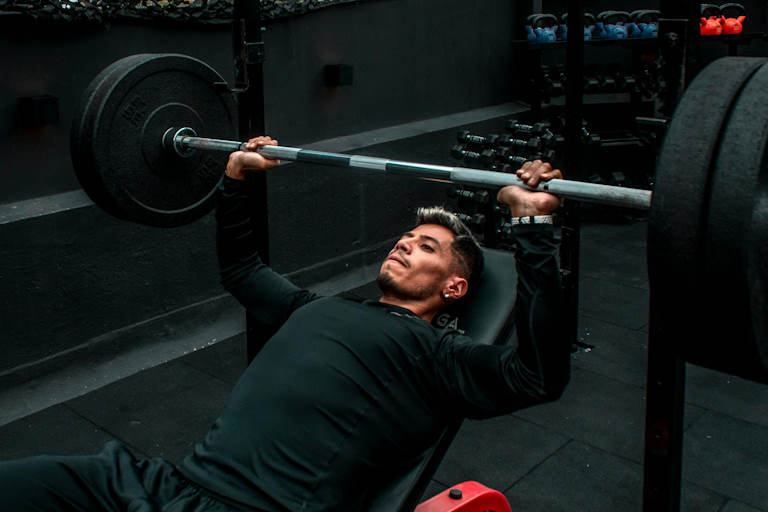
The barbell bench press is a must for chest strength and development. It’s a compound movement that primarily works the pectoral muscles, but also engages the triceps and shoulders, making it a highly efficient exercise for upper body strength. Whether your goal is muscle growth, strength improvement, or enhanced athletic performance, the barbell bench press delivers across all fronts.
For the barbell bench press, you will need a barbell and a sturdy, flat bench. Some gyms provide bench press stations with racks to hold the barbell, ensuring easier setup and safety.
How to Perform
- Begin by lying flat on a bench with your feet firmly planted on the floor.
- Grip the barbell with your hands slightly wider than shoulder-width apart.
- Unrack the barbell, lower it to your mid-chest in a controlled motion, keeping your elbows at a 45-degree angle to your body.
- Push the barbell back up to the starting position, fully extending your arms but without locking your elbows.
Maintaining proper form is critical in this exercise. Keep your back flat and avoid arching excessively. Your feet should stay grounded throughout the movement to provide stability. Avoid arching your back excessively, and focus on controlling the weight as you lift and lower it.
Muscles Worked
The barbell bench press primarily targets the pectoralis major, the large muscle of the chest, responsible for most of the pushing motions. The triceps and anterior deltoids (front part of the shoulders) are also engaged to assist in pressing the barbell.
The barbell bench press is one of the most effective exercises for building chest strength and muscle mass. It not only enhances the size of the pectoral muscles but also boosts overall upper body strength, making it a core component of any chest workout routine. For those looking to progress, mastering this exercise is essential.
2. Push-Ups: The Ultimate No-Equipment Chest Move
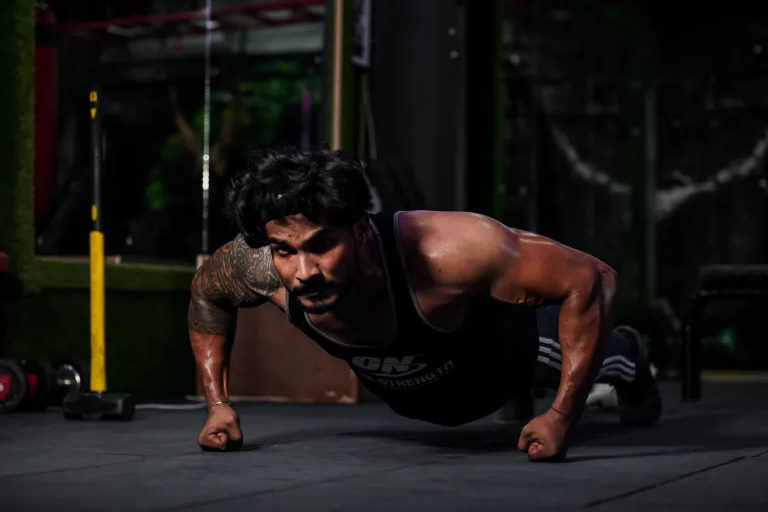
Push-ups are one of the most accessible and versatile chest exercises, requiring no equipment and offering endless variations to suit different fitness levels. They are a great exercise for developing functional upper body strength and can be performed almost anywhere. Push-ups are ideal for beginners who are building foundational strength and advanced athletes who want to maintain or enhance chest endurance.
Since push-ups are a bodyweight exercise, no equipment is required. However, you may want a yoga mat or soft surface to cushion your hands and knees.
How to Perform
Push-ups are easy to scale, making them effective for all fitness levels, whether you’re doing knee push-ups or adding weight for a challenge.
- Start in a high plank position, with your hands placed slightly wider than shoulder-width apart and your body forming a straight line from head to heels.
- Lower your body toward the ground by bending your elbows, keeping them close to your torso.
- Once your chest is close to the floor, push yourself back up to the starting position by extending your arms fully.
Proper form is essential to maximize the effectiveness of the push-up. Engage your core muscles throughout the movement to keep your hips from sagging or lifting too high. Focus on keeping your body in a straight line from your shoulders to your ankles to maintain stability and avoid unnecessary strain on your lower back.
Muscles Worked
Push-ups primarily target the pectoralis major, particularly the middle section of the chest. They also engage the triceps and anterior deltoids, with secondary involvement from the core muscles as they help stabilize the body throughout the movement.
Push-ups are a classic exercise that offers incredible versatility and effectiveness for chest development. Whether you’re just starting or looking for a bodyweight challenge, push-ups are a fantastic way to build chest strength and endurance. They’re easy to modify and can be integrated into almost any workout routine.
3. Dumbbell Flyes: Sculpt and Stretch
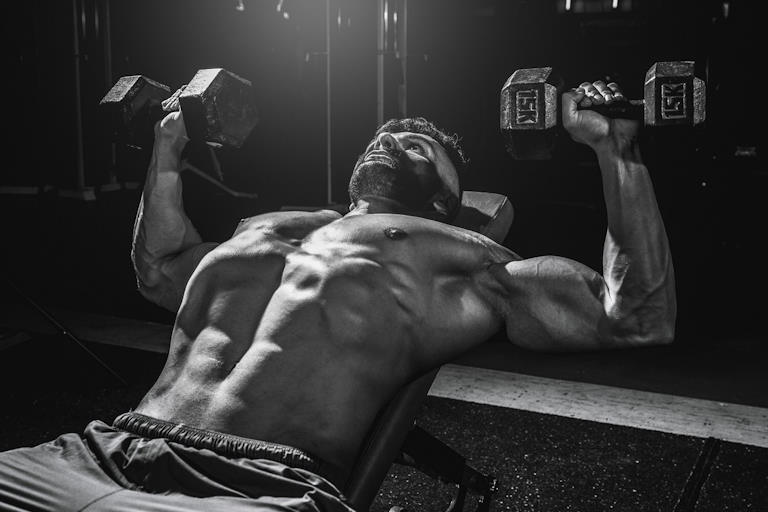
The dumbbell fly is an isolation exercise that focuses on stretching and contracting the chest muscles, providing a different type of stimulus compared to pressing movements. This exercise helps improve the range of motion in the chest and enhances muscle definition, making it a great complement to other compound chest exercises.
To perform dumbbell flyes, you will need a pair of dumbbells and a flat bench. It’s important to choose a weight that allows you to maintain control throughout the movement, as this exercise places significant stress on the shoulder joints.
How to Perform
- Lie flat on a bench, holding a dumbbell in each hand with your arms extended above your chest.
- Keep a slight bend in your elbows, and lower the dumbbells out in a wide arc until you feel a chest stretch.
- Bring the dumbbells back up to the starting position by squeezing your chest muscles together.
To avoid straining your shoulders, always keep a slight bend in your elbows and perform the movement in a slow, controlled manner. Focus on squeezing your chest at the top of the movement, rather than simply moving the dumbbells.
Muscles Worked
The dumbbell fly primarily isolates the pectoralis major, focusing on the horizontal adduction of the arms, which helps develop the chest’s overall size and shape. The anterior deltoids assist in the movement, but the primary focus remains on the chest.
Dumbbell flyes are an excellent exercise for stretching and engaging the chest muscles in a different plane of motion. They are particularly useful for increasing muscle definition and improving the flexibility of the chest. When performed correctly, dumbbell flyes can significantly enhance your chest workout routine.
4. Chest Dips: Power Up the Lower Chest
Chest dips are a bodyweight exercise that powerfully targets the lower portion of the chest. They are a challenging movement that requires control and strength, making them a favorite for those looking to build both muscle mass and endurance. By leaning forward during the exercise, you can shift the emphasis to the chest muscles, making dips an excellent alternative to traditional presses.
Chest dips are performed on parallel bars or a dip station, which you can commonly find in most gyms. Alternatively, some home setups also offer dip bars as part of multi-station machines.
How to Perform
- 1. Grip the parallel bars and lift yourself up until your arms are fully extended.
- 2. Lean slightly forward and lower your body by bending your elbows, bringing your chest down toward the bars.
- 3. Push yourself back up to the starting position by extending your arms, maintaining the forward lean to ensure chest engagement.
Lean slightly forward to target your chest and keep the movement controlled. Avoid flaring your elbows too much, as this can put undue stress on the shoulders. Instead, keep your elbows at a moderate angle, focusing on lowering yourself in a controlled manner.
Muscles Worked
Chest dips primarily work the lower portion of the pectoralis major, making them ideal for those looking to develop the lower chest. The triceps and anterior deltoids are also engaged as secondary muscles, helping with the pushing motion.
Chest dips are a powerful bodyweight exercise that focuses on the lower chest, making them an essential movement for a well-rounded chest workout. They challenge your strength and endurance, making them suitable for intermediate to advanced fitness levels. With proper form and control, chest dips can significantly enhance chest development.
5. Cable Crossovers: The Finishing Touch for Chest Definition
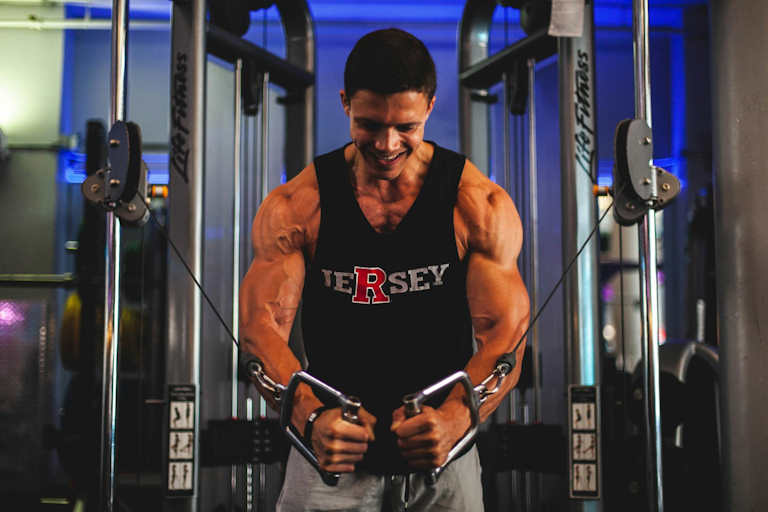
Cable crossovers are an excellent exercise for isolating and defining the chest muscles. By using cables, you maintain constant tension throughout the movement, which helps target the chest from a variety of angles. This exercise allows for a deep contraction in the chest muscles, making it a great finisher at the end of your workout.
To perform cable crossovers, you will need a cable machine with adjustable pulleys. Most gyms have cable machines, and many offer adjustable pulley heights to vary the angle of the movement.
How to Perform
- Set the pulleys to the highest setting and stand in the center, holding a handle in each hand.
- Step forward with one foot for balance and begin with your arms extended out to your sides, elbows slightly bent.
- Bring the handles down and together, crossing slightly at the bottom for maximum contraction.
- Slowly return to the starting position, keeping constant tension on the cables.
Ensure you keep a slight bend in your elbows throughout the movement to protect your shoulders. Focus on squeezing your chest at the end of the movement for maximum contraction. Keep the movement controlled—don’t let the weight pull your arms back too quickly.
Muscles Worked
Cable crossovers primarily engage the pectoralis major, targeting both the upper and lower chest depending on the pulley height. The anterior deltoids also assist in controlling the movement, while the constant tension from the cables keeps the chest engaged throughout.
Cable crossovers are a fantastic exercise for targeting the entire chest, offering a deep contraction that helps define and sculpt the muscles. The constant tension provided by the cables ensures that the chest muscles remain engaged throughout the movement, making it a perfect finishing exercise for chest day.
6. Machine Chest Press: Focused Strength for Beginners and Beyond
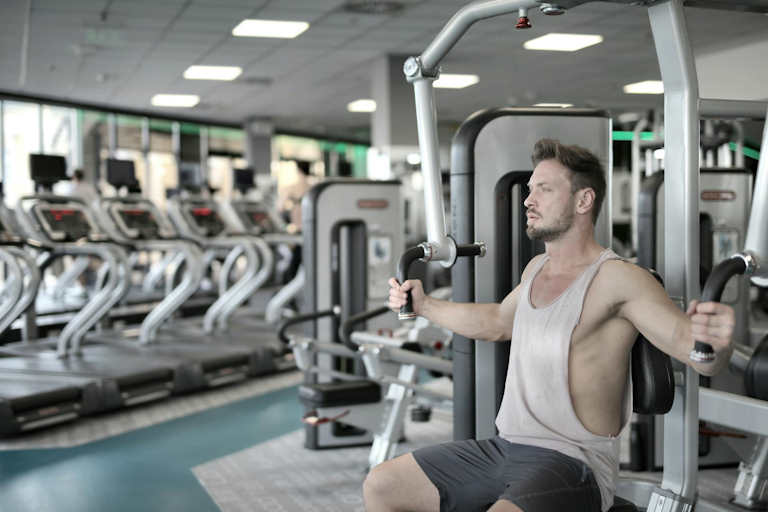
The machine chest press offers a controlled, safe environment for targeting the chest muscles, making it a great option for both beginners and advanced lifters. It mimics the movement of the bench press but with the added stability of a machine, allowing you to focus on muscle engagement without worrying about balancing the weight.
The machine chest press is typically found in most commercial gyms. The machine provides adjustable seating and handles to ensure the right fit for different body sizes and heights.
How to Perform
- Sit on the machine with your back flat against the seat and your feet firmly on the ground.
- Grip the handles slightly wider than shoulder-width apart.
- Push the handles forward until your arms are fully extended, then slowly lower them back to the starting position.
Keep your back pressed into the seat to maintain stability. Adjust the seat height so that the handles are in line with your mid-chest to maximize the engagement of the chest muscles.
Muscles Worked
The machine chest press primarily works the pectoralis major, with secondary assistance from the triceps and anterior deltoids. The fixed path of motion provided by the machine helps isolate the chest muscles more effectively, making it a great option for focused chest development.
The machine chest press is a versatile exercise that provides excellent muscle engagement while reducing the risk of injury. It’s an ideal choice for beginners looking to build chest strength, as well as experienced lifters who want to focus on form and muscle activation without worrying about balancing free weights.
Conclusion: Building a Stronger Chest
A balanced chest workout blends compound movements like bench presses with isolation exercises like flyes to target all chest muscles for optimal growth. These exercises work together to target all areas of the chest, helping you build strength, improve posture, and enhance overall upper body aesthetics.
Remember that form is key when performing chest exercises, so always prioritize quality movements over heavy weights. By consistently incorporating these exercises into your routine, you’ll be well on your way to building a stronger, more defined chest.
Ready to transform your chest? Incorporate these exercises into your routine and experience next-level strength and muscle definition.